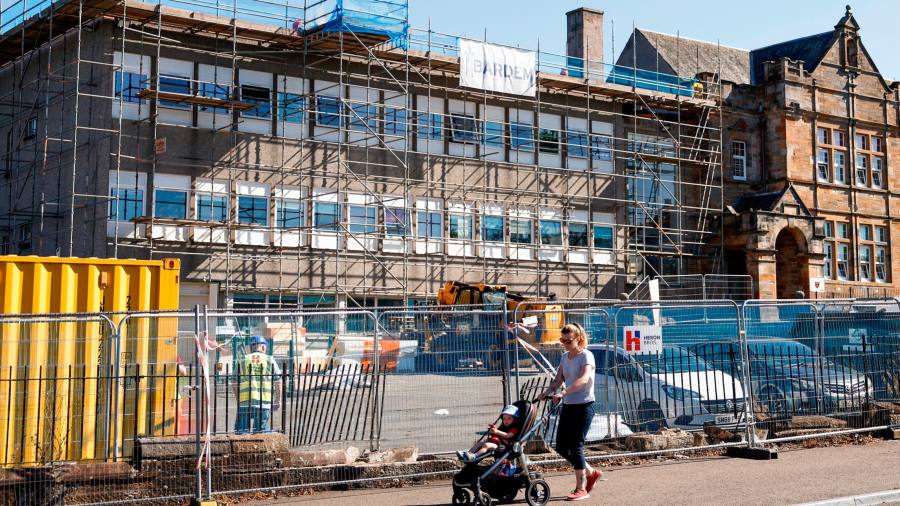
Receive free Commercial property updates
We’ll send you a myFT Daily Digest email rounding up the latest Commercial property news every morning.
One of the UK’s biggest private sector landlords will order checks on its older buildings for the type of dangerous concrete that has forced the closure of hundreds of school buildings this week.
Mark Allan, chief executive of Landsec, said the company had exposure to buildings built in the five decades after the second world war that it planned to redevelop and it would “definitely” look at surveying them to check for the presence of reinforced autoclaved aerated concrete, or Raac.
“It is incumbent on any responsible property owner to do some work to understand where we might have exposure,” he told the Financial Times, adding that he expected the surveys would be targeted at a small number of buildings, including shopping centres in Landsec’s portfolio that were built in the 1970s.
The move comes after the Institution of Structural Engineers, a professional body, urged owners of older commercial property to “conduct a survey of the building to identify or eliminate the possibility” of Raac, a lightweight concrete that is prone to collapse.
Raac was most widely used in the public sector between the mid-1950s and mid-1990s but was also utilised in commercial office buildings, shops, factories and warehouses, according to Noble Francis, economics director at the Construction Products Association, a trade body.
However, there was no data available about its prevalence in the private sector, he added. “That means it is impossible to estimate the total cost of remediating the buildings at this stage or how many years it will take to fully address the problem,” he said.
Matt Neave, partner at real estate adviser Gerald Eve, said the lack of information and regulation governing its use in the private sector meant that the risks linked to Raac-related failures were not well understood by owners.
“The majority of owners and occupiers of commercial buildings are completely unaware of this and probably have no assessment of whether it’s present or [how to manage] that risk,” he said.
Mark Reynolds, head of the Construction Leadership Council, an advisory body that includes government and industry experts, said it had not yet identified any at-risk private sector buildings.
But this would change “once companies and individuals begin to investigate or become aware of the risks”, he added.
The issues surrounding risks of corrosion and failure of Raac have been known for decades, and maintenance was the key to ensuring it did not crumble, said Professor John Kelsey, an expert in construction economics at University College London.
He added the material had been widely used in countries such as Germany and Japan, and that “with good design, construction and maintenance it has performed satisfactorily”.
Francis said better maintenance of commercial properties meant there were likely to be fewer issues with Raac in the private sector.
Commercial and industrial developers are more likely to have addressed the issues as part of their ongoing repairs and maintenance or when upgrading buildings to attract new tenants, he added.
In the public sector, a building’s use is often extended beyond its intended lifespan in an attempt to defer large capital expenditure.
Trade bodies said they were unclear as to the extent of the risks in the private sector.
Verity Davidge, director of policy at Make UK, which represents manufacturers, said: “This isn’t something that has hit our radars to date but we continue to keep a close watch.”
The British Retail Consortium said it would be “inaccurate” to suggest there was a systemic issue in the sector.
The British Property Federation, which represents the real estate industry, declined to comment.
Additional reporting by Euan Healy